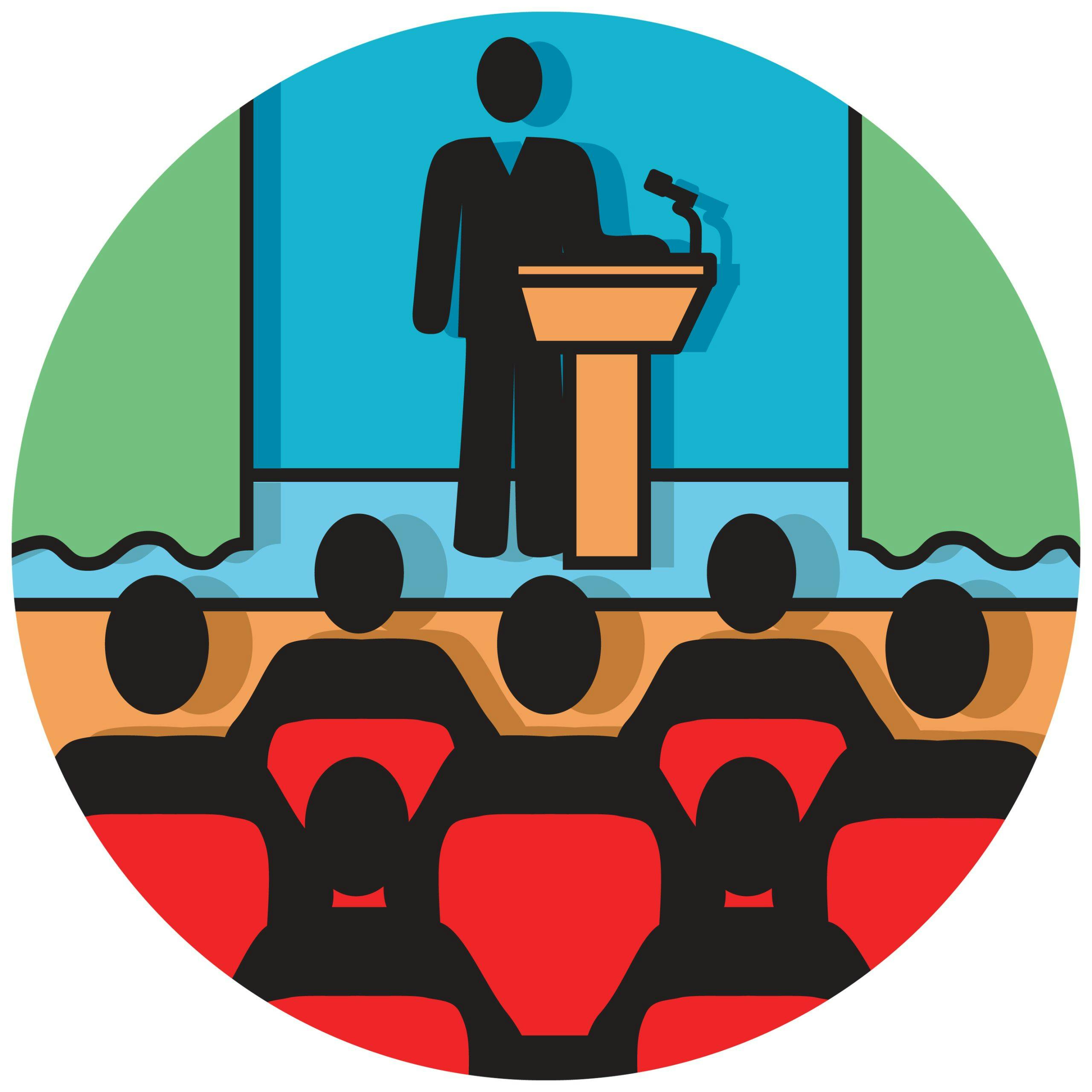It happens at every conference. The applause begins as soon as you’re introduced. You haven’t even said a word, and yet audiences, by and large, are generous with their applause.
And then it comes. Pause. Pause. Pause. Those are the three seconds of silence between their fading claps and the beginning of your talk. What’s happening during that short transition? People are sizing you up.
It happens every time you get up on stage or stand up to speak at a meeting. Without exception, the audience looks at your clothing, your eye contact, and your bearing. They are making personal judgments.
Do you appear trustworthy? Competent? Confident? What kind of vibe are you projecting? Are you someone to approach or avoid? All this is based upon the nonverbal cues you give to your audience. You have communicated without uttering a word.
Many speakers spend hours honing their scripts, seeking to choose exactly the right words, only to pay little or no attention to the visual judgments that audiences are making about them when it’s time to stand and deliver.
That’s a mistake. In the 1960s, Albert Mehrabian of UCLA did extensive research to understand the order of magnitude of verbal versus nonverbal communication. In his book Silent Messages, he asserted that:
- 55% of communication is nonverbal — your bearing;
- 38% is vocal — the manner in which you engage; and
- 7% are words — choose carefully.
These judgments are being made at lightning speed. In fact, my own research suggests that people make decisions about you in the first seven seconds. And it’s these early judgments that often prove to be one of the key predictors as to whether your speech will be perceived positively or negatively.
Avoid negative first impressions
How do you avoid negative first impressions? Step one is to take stock of what you look like in the mirror. Don’t be overly critical of your appearance, but be objective. Did you cut yourself shaving? Are you wearing a suit that doesn’t fit quite right anymore? Having a bad hair day? It’s best to adjust those, as minor as they may seem, before you step on stage.
Your effectiveness can be quickly inhibited if the audience is distracted and thinking that something is out of place:
His tie is too short. His button is unbuttoned. Her blouse is covered with lint.
Once an audience starts thinking about your appearance, they’re likely not paying attention to your words but to whatever caused the distraction.
Your nonverbal communication
Communicators who work on body language create important visual cues for their intended audience. Once you are comfortable on how you project nonverbally, try to make your audience feel what you are feeling. Below are some techniques to employ in order to maximize your body language and be a more persuasive and effective communicator:
- What you want to convey: Many people call this your “vibe.” You see it in musicians — the proverbial “rock star” vibe. Before you begin a speech, whether you’re walking into a boardroom or stepping on stage, think about the situation that you are in and make a clear choice about the attitude you want to project. Do you want to look powerful? Vulnerable? Confident?
- Where and how you stand in space: Status and power are nonverbally conveyed by height and space. Standing tall, pulling your shoulders back, and holding your head straight are all signals of confidence and competence.
- How you approach others: After a speech or a meeting — when the camera is off — is when the magic usually happens. You’ve given a speech, and if you provoked a reaction, someone is going to want to approach you. Smile. You’re sending a signal that you are friendly and approachable.
- What your eyes are saying: The eyes can be a window into your soul. If you are looking straight into people’s eyes, it’s very difficult for them to look away. They feel an immediate attachment and they look back. Try making a practice of noticing the other person’s eye color, which is one way of staying focused. How often do you hear, “He didn’t even look me in the eye”?
- How you shake hands: It’s the quickest way to establish rapport. It’s what we use to reach out and say, “I’m pleased to meet you. What a pleasure.” Shake their hand, not too tight, not too loose. It shouldn’t be limp because that’s what they’re going to remember.
- What gestures you make: Avoid looking rehearsed, like you’re a trained robot. Use your hands when you are giving a speech just as you would in ordinary life. Just be natural. Wherever your hands happen to end up, that’s where they end up.
Every encounter — from conferences and meetings to training sessions and business lunches — is a unique opportunity to meet people, network, and expand your professional contacts.
Your gestures and body movements should convince those around you that you are lively and energetic. Bring your mind, body, and spirit to every encounter and audience engagement.
Making a positive first impression is critical. You have just seven seconds — but if you handle yourself in the right ways, seven seconds are all you need. If words are stripped away and the only communication left is body language, the truth will find its way to the audience.
Before you stand and deliver, remind yourself that the body speaks before the mouth opens.
